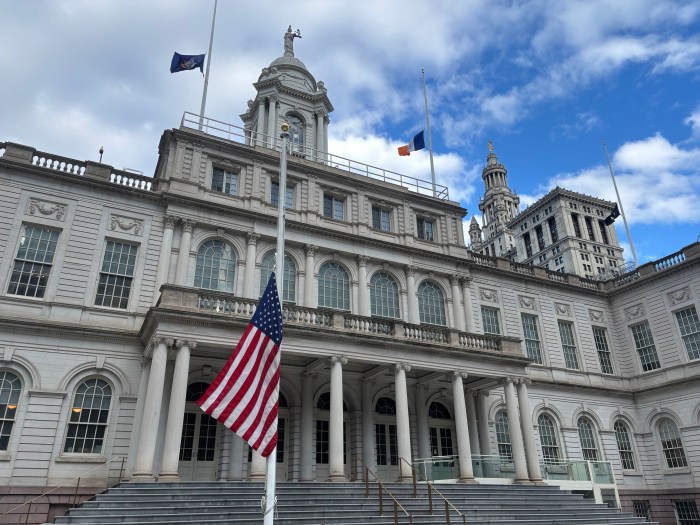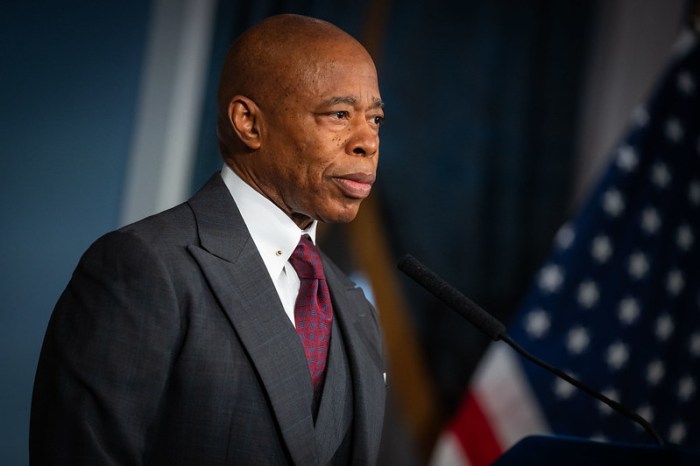BY PAUL SCHINDLER | Early last week, Governor Andrew Cuomo garnered big headlines with an executive order mandating the removal of homeless people from the streets when temperatures fall below 32 degrees. “We have to get people in off the streets,” the governor said, as his aides were reportedly explaining that anyone who would try to sleep outdoors in such conditions is clearly demonstrating a mental impairment that warrants their involuntary removal.
That sort of blanket policy flies in the face of customary thinking and perhaps a constitutional mandate that individuals cannot be forced into shelters against their will. And as quickly as critics began pointing that out, the Cuomo administration started to waffle. “Obviously, the order does not mandate involuntary commitment for competent individuals,” Alphonso David, the governor’s counsel, said in a written statement. The order, David later told the New York Times, is “a directive, an administrative policy is just that: It’s not an edict, and it’s subject to interpretation.”
Mayor Bill de Blasio, who oversees the largest number of homeless residents in the state — with an estimated 58,000 in shelters and perhaps another 3,000 to 4,000 on the streets every night — dismissed the news value of the governor’s move, saying, “At this point it seems to simply reiterate what’s already in the law and the power we already have to bring people in off the streets. And we use that power.”
And de Blasio’s police commissioner, Bill Bratton, who one might think has enough dust-ups on criminal justice questions to handle without wading into homeless policy, nevertheless backed up the mayor, saying, “I don’t see it changes anything in what we actually do or what we have done for 20 years.”
The quibble, coming just as the season’s first true cold snap descended on the city, seemed liked the latest in a wearying series of pissing contests between the state’s and the city’s dueling Democratic chief executives — many of them, frankly, initiated out of Albany. It seemed particularly distressing that New Yorkers without even the most basic of amenities — a roof over their head — would find themselves at the center of all this.
Divisiveness over how to tackle homelessness widened this week in a Wednesday morning article in the New York Times, in which city officials pushed back, saying it was a $65 million cut in state rental assistance funding in Cuomo’s first budget as governor in 2011 — which triggered the loss of an additional $27 million in federal funds and was denounced by de Blasio’s predecessor, Michael R. Bloomberg — that resulted in the city’s shelter population mushrooming by 16,000 in three years’ time.
Fortunately, hours later, in his annual State of the State Address, the governor offered what sounds like a substantive response to the homeless crisis that could move the debate beyond petty political maneuvering. Pledging to devote $20 billion to housing solutions over five years, Cuomo said the state would create 100,000 units of affordable housing, 6,000 new supportive housing beds, and 1,000 emergency shelter beds, as well as providing an array of other homeless services. Over 15 years, he said, the total commitment would be $28 billion and would provide 20,000 new supportive housing beds.
The governor’s effort would complement an initiative announced by the mayor in November to create 15,000 new units of supportive housing. Credit de Blasio with taking the initiative there.
Cuomo’s announcement also included a call for audits of local homeless services agencies around the state by either the state or city comptroller. “Shelters they find to be unsafe or dangerous will either immediately add local police protection — or they will be closed… If an operator’s management problem is systemic, a receiver will be appointed to run that system,” the governor said, in a warning that might rankle the mayor, given the widespread talk that Cuomo doubts de Blasio’s management smarts and the fact that City Comptroller Scott Stringer is a potential 2017 challenger.
But, whatever etiquette is or is not required in making such a pronouncement, the fact is that it’s hard to argue with government accountability. Cuomo aides, cited in Wednesday morning’s Times piece about the city administration pushing back on the governor’s homeless removal directive, emphasized that they keep a close eye on what works and make money available to such programs and pull it back from stragglers. That’s as it should be.
Cuomo is certainly no stranger to the intricacies and nuances of housing policy and homelessness, having founded, back in the 1980s, a non-profit aimed at expanding housing opportunities for economically disadvantaged people and then having run President Bill Clinton’s Department of Housing and Urban Development. De Blasio, meanwhile, has identified making New York City more affordable as a cornerstone of his agenda and, as mentioned above, is also attuned to the need to create supportive housing for those living in poverty.
Could tackling homelessness provide a safe harbor for Cuomo and de Blasio to play nice together? Don’t hold your breath. But we can at least hope — and we should certainly expect — that they will find some way to work together on this vital public need.


































